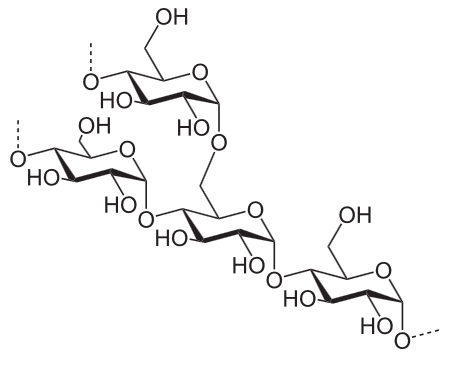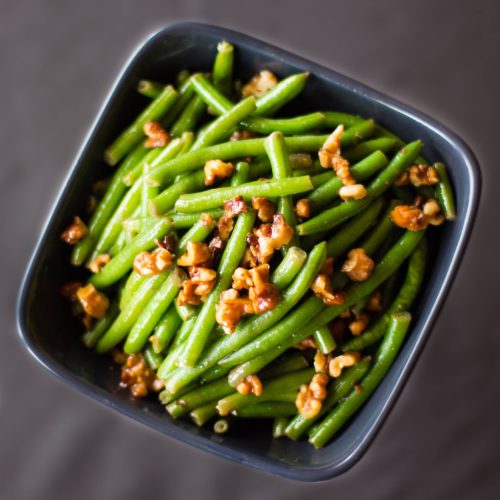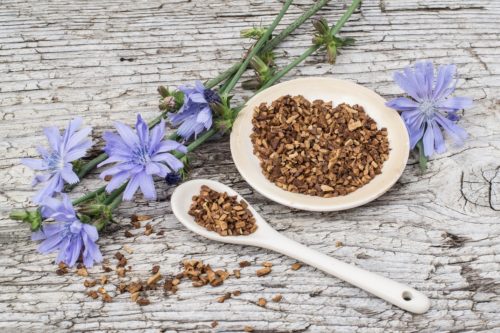
While starch is the most abundant complex carb most people eat, we also eat other complex carbs. Just like starch, our body has to break these down into simple sugars so we can use them for energy or store them for later use – either as glycogen or fat.
Pectin is the second major complex carb we commonly digest in our food. It is considered a “water soluble fiber” because we can digest it by hydrolysis, i.e. break it down using enzymes and water.
Just like starch, pectin is a polysaccharide made up of thousands of simple sugars linked together by glycosidic bonds. However, instead of using just glucose in the chains, it uses other simple sugars too, such as fructose and galactose. Like starch, pectin is also highly branched so its structure is complicated and very large. There are different kinds of pectins, depend on the types of sugars used, how the different sugars bond together, and the branching pattern that emerges. Therefore, a team of different types of enzymes are needed to fully digest pectin. Pectin is also known to slow down digestion because of its complicated structure and how it has to be broken down.
All fruits are high in pectin but apples and oranges are especially high in this polysaccharide. Citrus peel is exceptionally high in pectin with about 30% being pectin. Pectin is also found in many vegetables. It is especially high in carrots and parsnips (they are in the same family) but there’s also a fairly high quantity of pectin in peas and green beans.

Another large group of complex carbs that are found in non-starchy vegetables are oligosaccharides. “Oligo” literally means few (generally speaking more than two but less than ten) and “saccharides” means sugar. So, “oligosaccharides” means molecules made out of a “few” sugars. However, don’t let the “few” parts of this name fool you. These are still complex carbs made of many simple sugar molecules. However, the human body does not have the enzymes to fully break down oligosaccharides that are commonly found in our food. Therefore, they serve as “insoluble fiber,” i.e. fiber (carb) that cannot be hydrolyzed, at least not in the human body. Much of these oligosaccharides move through the small intestine and into the large intestine (colon) where our symbiotic bacteria break it down to some degree. Thus, the action of our symbiotic gut flora allows us to make use of some of the nutrients in oligosaccharides even though we don’t have the enzymes needed to break them down fully. The portion that doesn’t get used by our symbiotic bacteria or absorbed by us is eliminated as feces. This is why oligosaccharides are sometimes referred to as “prebiotic” which means it can feed the bacteria in our gut.
Fructooligosaccharides, also called oligofructose or oligofructans, are one type of oligosaccharides commonly found in our food. They are complex carbs that are made up of chains of fructose molecules, another simple sugar. You’ll find these in leafy green vegetables, jicama, cucumbers, squash, beets, onions, leeks, and many other non-starchy vegetables. Galactooligosaccharides, also called oligogalactose or oligolactose, is another type of oligosaccharides commonly found in our food. They are chains of galactose molecules with one glucose molecule attached at the end. These are also found in many vegetables, especially legume-based foods including beans, peas, lentils, peanut butter, alfalfa sprouts, tamarind, and many food additives like lecithin.

Oligosaccharides that contain fewer than 20 units of simple sugars may taste very mildly “sweet,” i.e. a hint of sweet. In general, the smaller the number of simple sugars, the slightly “sweeter” they may taste. Take fresh asparagus for example. If you don’t eat anything actually sweet with it, such as salad dressing that contains sugar, you may think it tastes very mildly sweet even though it contains only negligible amounts of fructose and sucrose. If you happen to catch it at the peak of the season and you cook it just right, it may taste even a little sweeter. If there’s sugar in the meal, however, you may not notice this very subtle sweet flavor.
If you eat a lot of processed foods with added sugar, or you just cook with a lot of sugar, your taste buds will become desensitized to sweet flavors. If this is case, you may not taste the subtle sweetness in vegetables like asparagus, kale, artichokes, and onions. In order to recalibrate your taste buds, i.e. restore them to normal function, you may have to cut sugar completely out of your diet for several weeks to be able to taste subtly sweet flavors again.
Oligosaccharides can be derived from chicory root – in this case, it is often called inulin or chicory root fiber. Inulin is widely used in commercial gluten-free and low-carb products to add fiber but first of all because it’s cheap, has very little calories and it’s a bulk ingredient. Know more about chicory root in the article How to Use Chicory Root.
Oligosaccharides are indigestible. They are very similar to dietary fiber. It is often used to provide a substitute to regular table sugar. Swerve, for example, is composed of erythritol and oligosaccharides and is widely used as a healthier substitute to regular table sugar. Some studies suggest that usage of oligosaccharides can reduce cholesterol and triglycerides.
You should note one thing about oligosaccharides: if you suffer from IBS (irritable bowel syndrome), you might want to avoid oligosaccharides, as they belong to FODMAP foods that can cause problems for people who suffer from IBS. So as healthy these prebiotics are, they can also cause lots of discomfort if you have a sensitive tummy.

Leave a Reply
You must be logged in to post a comment.